
Wetenschap
NASA's DART-ruimtevaartuig stort neer op asteroïde tijdens verdedigingstest
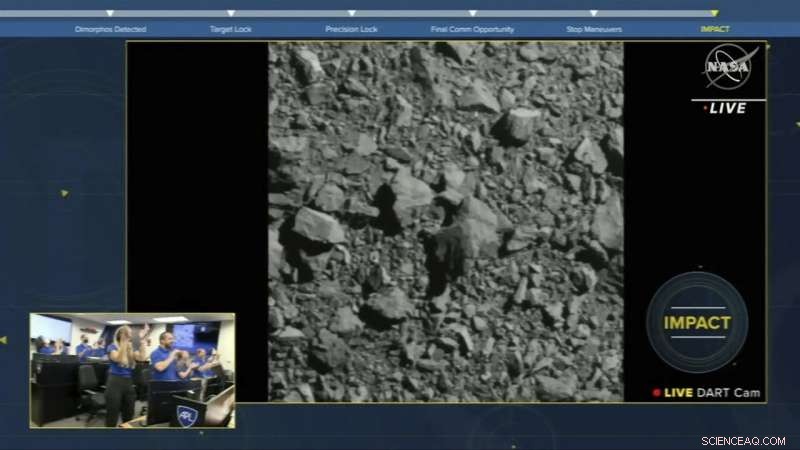
In deze afbeelding, gemaakt van een NASA-livestream, stort het ruimtevaartuig Double Asteroid Redirection Test op maandag 26 september 2022 neer op een asteroïde. Credit:ASI/NASA via AP
Een NASA-ruimtevaartuig heeft maandag een asteroïde met verbijsterende snelheid geramd tijdens een ongekende generale repetitie voor de dag dat een moordende rots de aarde bedreigt.
De galactische slag vond plaats op een ongevaarlijke asteroïde op 11,3 miljoen kilometer afstand, waarbij het ruimtevaartuig genaamd DART met een snelheid van 14.000 mph (22.500 km/u) de ruimterots in ploegde. Wetenschappers verwachtten dat de impact een krater zou uithakken, stromen van rotsen en vuil de ruimte in zou slingeren en, belangrijker nog, de baan van de asteroïde zou veranderen.
"We hebben invloed!" kondigde Elena Adams van Mission Control aan, op en neer springend en haar armen omhoog stekend.
Telescopen over de hele wereld en in de ruimte gericht op hetzelfde punt in de lucht om het spektakel vast te leggen. Hoewel de impact meteen duidelijk was - het radiosignaal van DART stopte abrupt - zal het een paar maanden duren om te bepalen hoeveel het pad van de asteroïde is veranderd.
De missie van 325 miljoen dollar was de eerste poging om de positie van een asteroïde of een ander natuurlijk object in de ruimte te veranderen.
"Voor zover we kunnen nagaan, was onze eerste planetaire verdedigingstest een succes", vertelde Adams later op een persconferentie, de kamer vulde zich met applaus. "Ik denk dat aardbewoners beter moeten slapen. Absoluut, dat zal ik doen."
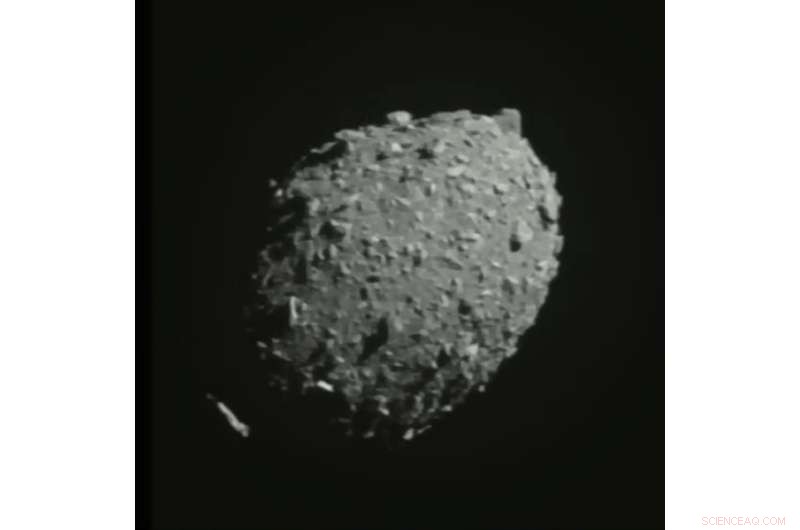
In deze afbeelding, gemaakt van een NASA-livestream en genomen vanaf het ruimtevaartuig Double Asteroid Redirection Test, wordt asteroïde Dimorphos gezien terwijl het ruimtevaartuig ernaartoe vliegt, maandag 26 september 2022. Credit:ASI/NASA via AP
NASA-beheerder Bill Nelson herinnerde mensen er eerder op de dag via Twitter aan:"Nee, dit is geen filmplot." He added in a prerecorded video:"We've all seen it on movies like "Armageddon," but the real-life stakes are high."
Monday's target:a 525-foot (160-meter) asteroid named Dimorphos. It's a moonlet of Didymos, Greek for twin, a fast-spinning asteroid five times bigger that flung off the material that formed the junior partner.
The pair have been orbiting the sun for eons without threatening Earth, making them ideal save-the-world test candidates.
Launched last November, the vending machine-size DART—short for Double Asteroid Redirection Test—navigated to its target using new technology developed by Johns Hopkins University's Applied Physics Laboratory, the spacecraft builder and mission manager.
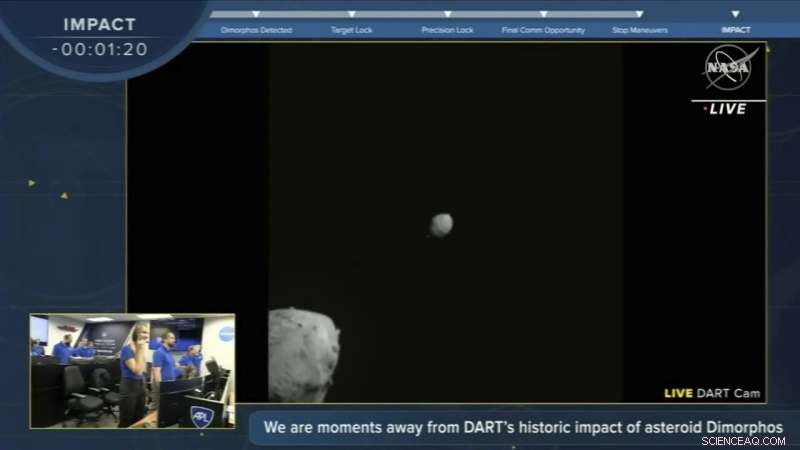
In this image made from a NASA livestream, the Double Asteroid Redirection Test spacecraft approaches asteroid Dimorphos, center, as larger asteroid Didymos fades away from view on Monday, Sept. 26, 2022. Credit:ASI/NASA via AP
DART's on-board camera, a key part of this smart navigation system, caught sight of Dimorphos barely an hour before impact. "Woo hoo!" exclaimed Adams, a mission systems engineer at Johns Hopkins.
With an image beaming back to Earth every second, Adams and other ground controllers in Laurel, Maryland, watched with growing excitement as Dimorphos loomed larger and larger in the field of view alongside its bigger companion. Within minutes, Dimorphos was alone in the pictures; it looked like a giant gray lemon, but with boulders and rubble on the surface. The last image froze on the screen as the radio transmission ended.
Flight controllers cheered, hugged one another and exchanged high fives. Their mission complete, the DART team went straight into celebration mode. There was little sorrow over the spacecraft's demise.
"Normally, losing signal from a spacecraft is a very bad thing. But in this case, it was the ideal outcome," said NASA program scientist Tom Statler.
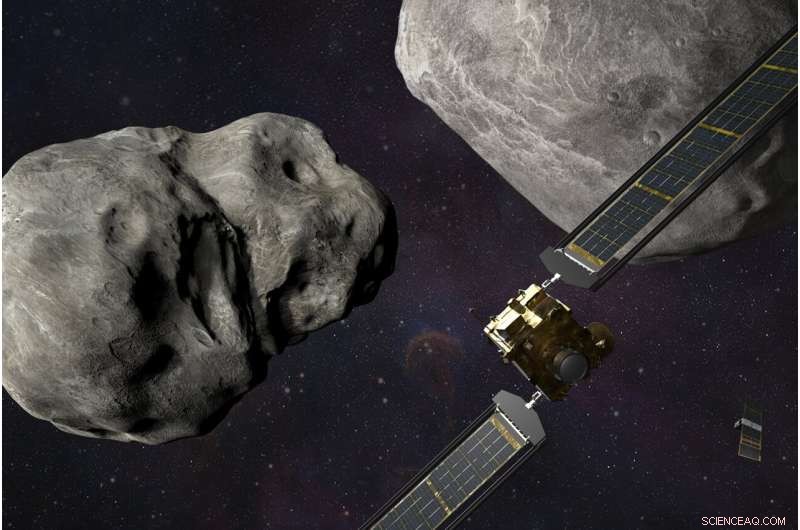
This illustration made available by Johns Hopkins APL and NASA depicts NASA's DART probe, foreground right, and Italian Space Agency's (ASI) LICIACube, bottom right, at the Didymos system before impact with the asteroid Dimorphos, left. DART is expected to zero in on the asteroid Monday, Sept. 26, 2022, intent on slamming it head-on at 14,000 mph. The impact should be just enough to nudge the asteroid into a slightly tighter orbit around its companion space rock. Credit:Steve Gribben/Johns Hopkins APL/NASA via AP
Johns Hopkins scientist Carolyn Ernst said the spacecraft was definitely "kaput," with remnants possibly in the fresh crater or cascading into space with the asteroid's ejected material.
Scientists insisted DART would not shatter Dimorphos. The spacecraft packed a scant 1,260 pounds (570 kilograms), compared with the asteroid's 11 billion pounds (5 billion kilograms). But that should be plenty to shrink its 11-hour, 55-minute orbit around Didymos.
The impact should pare 10 minutes off that. The anticipated orbital shift of 1% might not sound like much, scientists noted. But they stressed it would amount to a significant change over years.
"Now is when the science starts," said NASA's Lori Glaze, planetary science division director. "Now we're going to see for real how effective we were."
Planetary defense experts prefer nudging a threatening asteroid or comet out of the way, given enough lead time, rather than blowing it up and creating multiple pieces that could rain down on Earth. Multiple impactors might be needed for big space rocks or a combination of impactors and so-called gravity tractors, not-yet-invented devices that would use their own gravity to pull an asteroid into a safer orbit.
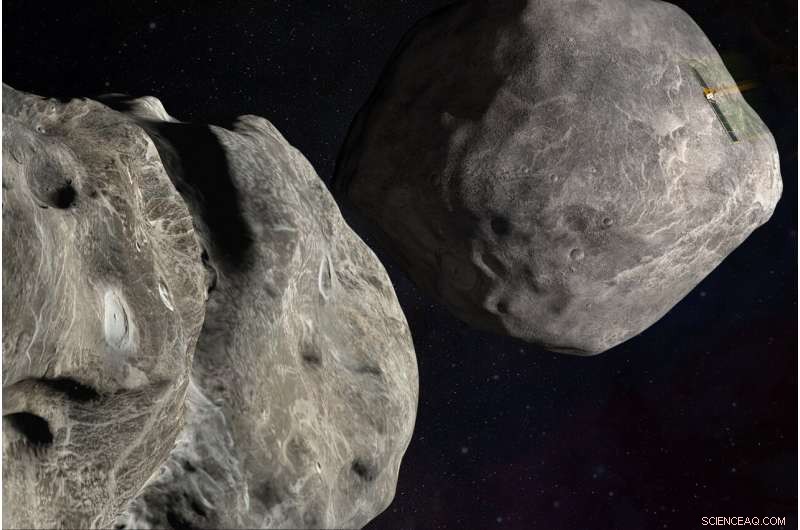
This illustration made available by Johns Hopkins APL and NASA depicts NASA's DART probe, upper right, on course to impact the asteroid Dimorphos, left, which orbits Didymos. DART is expected to zero in on the asteroid Monday, Sept. 26, 2022, intent on slamming it head-on at 14,000 mph. The impact should be just enough to nudge the asteroid into a slightly tighter orbit around its companion space rock. Credit:Steve Gribben/Johns Hopkins APL/NASA via AP
"The dinosaurs didn't have a space program to help them know what was coming, but we do," NASA's senior climate adviser Katherine Calvin said, referring to the mass extinction 66 million years ago believed to have been caused by a major asteroid impact, volcanic eruptions or both.
The non-profit B612 Foundation, dedicated to protecting Earth from asteroid strikes, has been pushing for impact tests like DART since its founding by astronauts and physicists 20 years ago. Monday's feat aside, the world must do a better job of identifying the countless space rocks lurking out there, warned the foundation's executive director, Ed Lu, a former astronaut.
Significantly less than half of the estimated 25,000 near-Earth objects in the deadly 460-foot (140-meter) range have been discovered, according to NASA. And fewer than 1% of the millions of smaller asteroids, capable of widespread injuries, are known.
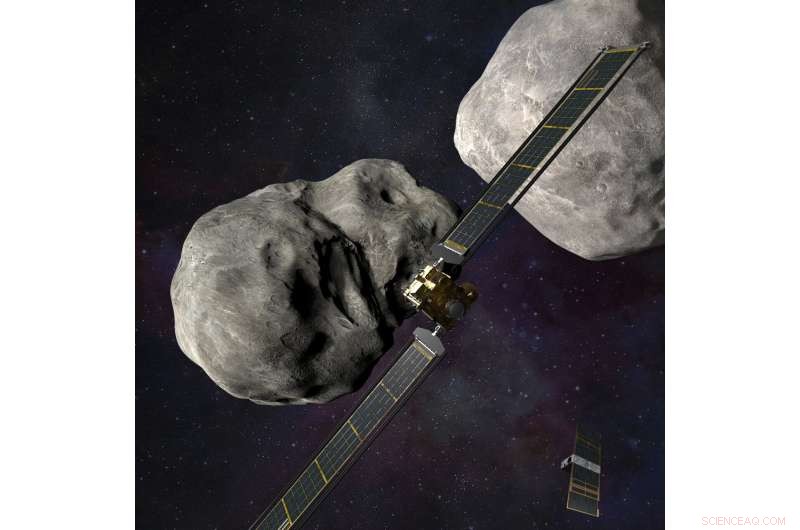
This illustration made available by Johns Hopkins APL and NASA depicts NASA's DART probe, center, and Italian Space Agency's (ASI) LICIACube, bottom right, at the Didymos system before impact with the asteroid Dimorphos, left. DART is expected to zero in on the asteroid Monday, Sept. 26, 2022, intent on slamming it head-on at 14,000 mph. The impact should be just enough to nudge the asteroid into a slightly tighter orbit around its companion space rock. Credit:Steve Gribben/Johns Hopkins APL/NASA via AP
The Vera Rubin Observatory, nearing completion in Chile by the National Science Foundation and U.S. Energy Department, promises to revolutionize the field of asteroid discovery, Lu noted.
Finding and tracking asteroids, "That's still the name of the game here. That's the thing that has to happen in order to protect the Earth," he said. + Verder verkennen
NASA spacecraft closes in on asteroid for head-on collision
© 2022 The Associated Press. Alle rechten voorbehouden. Dit materiaal mag niet worden gepubliceerd, uitgezonden, herschreven of opnieuw verspreid zonder toestemming.
 Boomzaden identificeren met afbeeldingen
Boomzaden identificeren met afbeeldingen  Gegevens van 29, 798 opruimacties over de hele wereld onthullen enkele van de ergste zwerfvuilplekken
Gegevens van 29, 798 opruimacties over de hele wereld onthullen enkele van de ergste zwerfvuilplekken Typhoon laat 1 dode achter, grote schade in Filippijnse steden
Typhoon laat 1 dode achter, grote schade in Filippijnse steden EPA-adviseur promoot schadelijke ideeën, wetenschappers zeggen:
EPA-adviseur promoot schadelijke ideeën, wetenschappers zeggen: In Irmas pad, Haïtianen trotseren stormen alleen
In Irmas pad, Haïtianen trotseren stormen alleen
Hoofdlijnen
- Marine fytoplankton redt zich met een beetje hulp van zijn bacterievrienden
- Een schimmel die kleiner wordt om de hersenen beter te infecteren
- Wat zou er gebeuren als een cel geen Golgi-lichamen had?
- Biologen identificeren algemene resistentie tegen koraalziekte
- Wat zijn enkele voor- en nadelen van het gebruik van DNA-analyse om rechtshandhaving bij criminaliteit te bevorderen?
- Wat is de vloeistof die de ruimte tussen de kern en het celmembraan vult?
- Nieuwe celvrije eiwitkristallisatiemethode om structurele biologie te bevorderen
- De vogels van een meedogenloos paradijs
- Grootte is belangrijk - hoe trips hun partners kiezen
- Oude sterren werpen licht op de overeenkomsten van de aarde met andere planeten
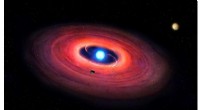
- ESAILs eerste kaart van wereldwijde verzending

- Juno-missie bereidt zich voor op 11 december Jupiter flyby
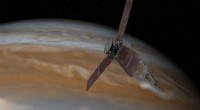
- Langverwachte recensie onthult reis van water van interstellaire wolken naar bewoonbare werelden
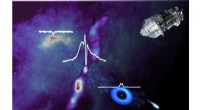
- Raket om de zon te bekijken met röntgenzicht
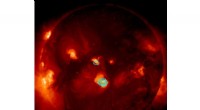
 Aardverschuivingen bedreigen de armen in de steden in toenemende mate
Aardverschuivingen bedreigen de armen in de steden in toenemende mate Nanocapsules ontworpen voor het diagnosticeren van kwaadaardige tumoren
Nanocapsules ontworpen voor het diagnosticeren van kwaadaardige tumoren De functie van NIMA-gerelateerd kinase 6 in de rechte groei van plantencellen
De functie van NIMA-gerelateerd kinase 6 in de rechte groei van plantencellen Vulkanen en hun soorten uitbarstingen
Vulkanen en hun soorten uitbarstingen Bedrijven in consumentengoederen die zich voorbereiden op de gevolgen van klimaatverandering
Bedrijven in consumentengoederen die zich voorbereiden op de gevolgen van klimaatverandering Kijken naar vloeibare cellen in variabele zwaartekracht
Kijken naar vloeibare cellen in variabele zwaartekracht Verzilveren op cryptocurrencies
Verzilveren op cryptocurrencies PoseRBPF:een nieuw deeltjesfilter voor het volgen van 6D-objecten
PoseRBPF:een nieuw deeltjesfilter voor het volgen van 6D-objecten
- Elektronica
- Biologie
- Zonsverduistering
- Wiskunde
- French | Italian | Spanish | Portuguese | Swedish | German | Dutch | Danish | Norway |

-
Wetenschap © https://nl.scienceaq.com

